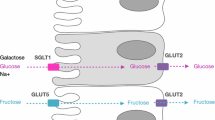Abstract
A commercial neuroleptanalgesic acepromazine-etorphine combination administered intramuscularly to four horses produced a severe tachycardia and an increase in muscular tone, together with hypoxaemia, hypercapnia, metabolic acidosis associated with an increase in the packed cell volume and hyperglycaemia. No electrolyte changes were found. After reversal of the action of etorphine with diprenorphine, there was a prolonged decrease in the calcium and phosphorus serum concentrations and decreases in the packed cell volume and the total protein serum concentration.
In a second experiment on the same four horses, glyceryl guaiacolate (10 g/100 kg body weight intravenously) was given as soon as the horses were anaesthetized with acepromazine-etorphine. The muscular rigidity disappeared and the tachycardia was less evident. There was a more pronounced hypoxaemia but the changes in the other parameters were similar to those in the first experiment.
It was concluded that the neuroleptanalgesic-glyceryl guaiacolate combination is not a safe anaesthetic procedure in horses.
Similar content being viewed by others
References
Alford, B. T., Burkhart, R. L. and Johnson, W. P., 1974. Etorphine and diprenorphine as immobilizing and reversal agents in captive and free-ranging mammals. Journal of the American Veterinary Medical Association, 164, 702–705
Booth, N. H., 1977. Neuroleptanalgesics, narcotic analgesics, and analgesic antagonists. In: L. M.Jones, N. H.Booth and L. E.McDonald (eds.), Veterinary Pharmacology and Therapeutics, (Iowa State University Press, Ames, Iowa), 318–350
Bowman, W. C., 1981. Effects of adrenergic activators and inhibitors on the skeletal muscle. In: L.Szekeres (ed.), Handbook of Experimental Pharmacology, Part II, (Springer Verlag, Berlin) 47–128
CardinetIII, G. H. and Stephens-Orvis, J., 1980. Skeletal muscle function. In: J. J.Kaneko (ed.), Clinical Biochemistry of Domestic Animals, (Academic Press, New York), 535–570
Davis, L. E. and Wolff, W. A., 1972. Pharmacokinetics and metabolism of glyceryl guaiacolate in ponies, American Journal of Veterinary Research, 31, 469–473
De Moor, A., Desmet, P., Van Den Hende, C. and Moens, Y., 1978. Influence of promazine on the venous haematocrit and plasma protein concentration in the horse. Zentralblatt für Veterinärmedizin A., 25, 189–197
Garner, H. E., Rosborough, J. P. and Amend, J. F., 1972. Effects of glyceryl guaiacolate on certain serum, plasma and cellular parameters in ponies. Veterinary Medicine/Small Animal Clinician, 55, 408–412
Harthoorn, A. M., 1966. Restraint of undomesticated animals, Journal of the American Veterinary Association, 149, 875–880
Harthoorn, A. M., 1971. The capture and restraint of wild animals. In: L. R.Soma (ed.), Textbook of Veterinary Anesthesia (Williams and Wilkins Co., Baltimore), 404–437
Hillidge, C. J., 1978. The influence of neuroleptanalgesia on the serum activity of muscle enzymes in ponies. Equine Veterinary Journal, 10, 60–64
Hillidge, C. J. and Lees, P., 1971. Preliminary investigations of the actions of Immobilon in the horse. Veterinary Record, 89, 280–281
Hillidge, C. J. and Lees, P., 1974. Fatality after revivon. Veterinary Record, 94, 476
Hillidge, C. J. and Lees, P., 1975. Influence of the neuroleptanalgesic combination of etorphine and acepromazine in the horse: blood gases and acid-base balance. Equine Veterinary Journal, 7, 148–154
Hillidge, C. J. Lees, P., Mullen, P. A. and Serrano, L., 1974. Influence of acepromazine/etorphine and acepromazine/metomidate on serum enzyme activities in the horse. Research in Veterinary Science, 17, 395–397
Hubbell, J. A. E., Muir, W. W. and Sams, R. A., 1980. Guaifenesin: cardiopulmonary effects and plasma concentrations in horses. American Journal of Veterinary Research 41, 1751–1755
Jenkins, J. T., Crooks, J. L., Charlesworth, C., Blaine, G. F. and Ling, C. M., 1972. The use of etorphine-acepromazine (analgesic-tranquillizer) mixtures in horses. Veterinary Record, 90, 207–210
Kock, R. A., Harwood, J. P. P., Pearce, P. C. and Cinderey, R. N., 1986. Chemical immobilization of Formosa Sika deer (Cervus nippas)-A physiological study. Journal of the Association of Veterinary Anaesthetists, 14, 120–151
Lees, P., Meredith, M. J. and Hillidge, C. J., 1983. Actions alone and in combination of etorphine and acepromazine in the horse and the pig. Veterinary Research Communications, 7, 201–202
Muylle, E., Van Den Hende, C., Nuytten, J., Deprez, P., Vlaeminck, K. and Oyaert, W., 1984. Potassium concentration in equine red blood cells: normal levels and correlation with potassium levels in plasma. Equine Veterinary Journal, 16, 447–449
Nelson, L., 1978. Equidae. In: M. E.Fowler (ed.), Zoo and Wild Animals Medicine, (Saunders, Philadelphia), 753–759
Robertson, S. A., 1987. Metabolic and hormonal responses to neuroleptanalgesia (etorphine and acepromazine) in the horse. Equine Veterinary Journal, 19, 214–217
Schlarmann, B., Görtlitz, B.-D., Wintzer, H.-J. and Frey, M.-H., 1973. Clinical pharmacology of an etorphine-acepromazine preparation: experiments in dogs and horses. American Journal of Veterinary Research, 34, 411–415
Simesen, M. G., 1980. Calcium, phosphorus and magnesium metabolism. In: J. J.Kaneko (ed.), Clinical Biochemistry of Domestic Animals, (Academic Press, New York), 576–635
Trim, C. M., Moore, J. N. and White, N. A., 1985. Cardiopulmonary effects of dopamine hydrochloride in anaesthetised horses. Equine Veterinary Journal, 17, 41–44
Tobin, T., 1978. Pharmacology review: narcotic analgesics and the opiate receptor in the horse. Journal of Equine Medicine and Surgery, 9, 397–399
Wallach, J. D., Frueh, R. and Lentz, M., 1967. The use of M99 as an immobilizing and analgesic agent in captive wild animals. Journal of the American Veterinary Association, 151, 870–877
Weiner, N., 1985. Norepinephrine, epinephrine, and the sympathomimetic amines. In: A.Goodman Gilman T. W.Gilman, W.Rall and F.Murad. (eds.), The Pharmacological Basis of Therapeutics, (Macmillan, New York), 145–180
Author information
Authors and Affiliations
Rights and permissions
About this article
Cite this article
Gasthuys, F., Vandamme, R., De Moor, A. et al. Haemodynamic, metabolic and physical responses to a neuroleptanalgesic-glyceryl guaiacolate combination in the horse. Veterinary Research Communications 13, 113–126 (1989). https://doi.org/10.1007/BF00346721
Accepted:
Issue Date:
DOI: https://doi.org/10.1007/BF00346721




